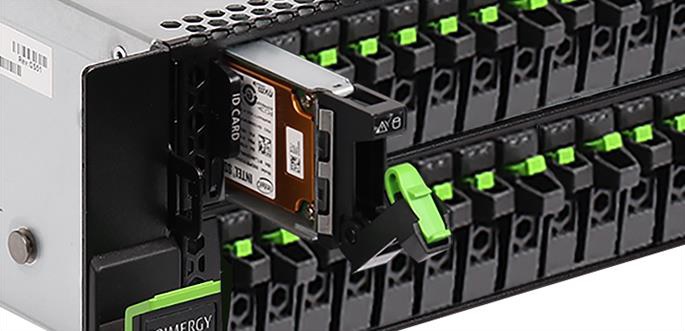
Why the new EDSFF storage format is hot stuff – and what else you need to know about it.
If you’re at all curious about what comes next in enterprise storage devices, you need to know about EDSFF, the Enterprise and Data Centre SSD Form Factor – better known as the “ruler” format. Fortunately, we published a paper on this during the first half of 2021 (download it free here), and while things have moved on a little since, it remains a good backgrounder on the topic.
In fact, the main thing that’s happened since we published that paper is that EDSFF now looks even more likely to become the preferred successor to today’s U.2 and M.2 formats for solid-state drives (SSDs). As more devices from more manufacturers reach the market – for instance, Samsung showed new 128TB SSDs in the E1.L long ruler format at its Tech Day last month – the format has also consolidated somewhat.
A notable example here is that, while the EDSFF specification supports multiple thicknesses of ruler to allow for modules that need bigger heatsinks, hardware developers look to be coalescing around a thickness of 15mm. This should make it simpler to plan for and buy EDSFF-based systems and solutions.
And while a year or two ago, it seemed that only the hyperscalers really needed the higher storage density and other advantages that EDSFF brings – such as hot-swap drive replacement – that has changed too. Many enterprises also now need to pack more storage into less rack- and floor-space in their crowded data centres.
Then there’s the arrival of PCIe Gen4, and especially of PCIe Gen5, which means that SSDs are ever more power-hungry. That’s really stretching the heat dissipation capabilities of the M.2 format – more power requires bigger heatsinks, and the SSD therefore needs more physical space in the server or storage system.
In contrast, 15mm SSDs using the E1.S short ruler format – which is the one most likely to appear in enterprise data centres – can already take the heat, thanks to their built-in heatsinks. And being more compact than M.2, they can easily double the number of SSDs that will fit in a 1U server, say.
Why aren’t we all already running ruler-based servers and storage systems, then? Quite simply, it’s not just about the SSD. The indications are that many manufacturers have been waiting for PCIe Gen5 to fully leverage the capabilities of EDSFF, and will now pair ruler modules and Gen5 in their next hardware generations. So as you look to refresh your servers and storage systems with the latest models, EDSFF is definitely something you need to get up to speed on.